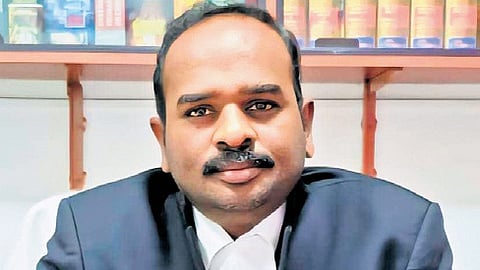

The custodial death of a temple guard, namely Ajith Kumar (27), in Tamil Nadu on June 28, 2025, following his unlawful detention over mere suspicions of jewel theft, is yet another example of the persistent rot of police brutality and systemic impunity within India’s law enforcement apparatus. The post-mortem report paints a harrowing picture, documenting 44 external injuries to his body parts like hands, chest, ribs, back, head, and dried blood around his ears with several internal injuries.
A pattern of impunity and failed accountability
Suspensions, arrests, or transfers of investigation to bodies like the CBI are inconsistently applied, predominantly reserved for high-profile cases. However, it has been done in the above case, thanks to the political pressures on this issue. Data from the Union Home Ministry reveal a grim statistic: 669 deaths occurred in police custody between 2017 and 2022. Cases are routinely registered under vague headings like “Suspicious Death,” with only a minuscule fraction being reclassified as murder or culpable homicide. Convictions are exceptionally rare, hampered by lack of evidence, departmental influence shielding perpetrators, and the inherent difficulty victims face in securing witnesses when crimes occur “within the four walls” of the state authority.
Legal vacuum and inadequate safeguards
A core reason for the escalation of custodial violence is the glaring lack of comprehensive anti-torture legislation in India, which is yet to ratify the United Nations Convention Against Torture. The Prevention of Torture Bill, 2010, introduced to specifically punish torture by public servants, languishes, unpassed by Parliament. Critically, Indian law, including the new BNS, lacks a proper legal definition of “torture,” relying on broader offences under the IPC which are often insufficient.
While Article 21 of the Constitution (Right to Life) has been interpreted by the courts to include protection from torture, and landmark guidelines were issued by the Supreme Court in the D K Basu case (mandating procedures during arrest and detention and addressing custodial crimes and compensation, etc.), judicial intervention often culminates only in monetary compensation, falling short of complete justice and criminal accountability.
Ineffective human rights architecture
The Protection of Human Rights Act, 1993, established the National and State Human Rights Commissions. However, their powers are largely recommendatory. While the Madras High Court has ruled these recommendations binding, many crucial suggestions remain unimplemented. The Act fails to define “custodial crimes” adequately and lacks robust rules for designated Human Rights Courts, which are largely non-functional.
Urgent reforms needed
Custodial violence is a fundamental assault on the Rule of Law and the administration of criminal justice, disproportionately targeting the poor and marginalised.
The following reforms are required
A dedicated, independent unit must be established to register and investigate all allegations of the custodial crimes with a mandate time-bound investigation.
The standard of inquest conducted by Judicial Magistrates under Section 196 of BNSS must be significantly elevated. This includes mandating videographed post-mortems conducted by forensic experts and ensuring the access of the victim’s family to the deceased’s body.
Officials accused of custodial violence must be suspended immediately pending investigation.
NHRC/SHRCs must be granted stronger investigative autonomy and their recommendations endowed with enforceable legal weight.
Comprehensive and continuous human rights sensitisation programmes for police personnel are paramount.
India must enact a comprehensive, stringent law specifically criminalising torture in all forms, providing clear definitions, stringent punishments, and reversing the burden of proof in custodial violence cases to address evidence hurdles.
(The writer is a practising advocate, Madurai Bench of the Madras High Court)